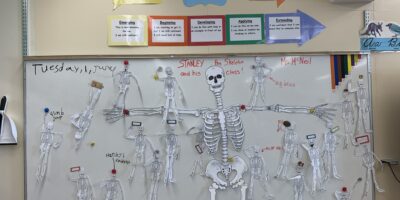Learning a second language was never one of my strong suits in school. In elementary, I was one of the fortunate students that had a French/music teacher that was bilingual and learning French then seemed so simple and something that I could eventually learn the basics for. Then came high school, and I made it till grade 10 French where the French teacher then told me I should consider dropping the course and trying something that I would be better at. That right there was the end of trying to learn a second language. It was confidence shattering to have gone from having such a great French teacher in elementary school to one that was not encouraging of all students trying to learn and develop a second language. That right there is why I want to make sure that I do justice to my future student when teaching them in L2. I want students to be excited when they learn a new word and remember it for the next class. I want them to be exposed to both the French and Dakleh languages as well as American Sign Language (ASL) since they are all prominent in Prince George, and encourage ALL students that no matter what someone else says, if you want to learn a second language (which I highly encourage), do it!
To make sure that my students would be getting full and useful exposure to other languages I think that having posters and displays around the classroom is one of the best places to start. Just by having them on the walls, students will be continuously exposed to these words, and since it is no surprise when students’ eyes wander in class, if they are not paying attention to a lesson then they can glance at different visuals around the class. I believe visual exposure is a great start because even if they are not fully focused on what they are seeing, it will still be in their mind as something they have come across before, and the more they look at that visual the more they will remember it. Example of posters or displays would be colours, numbers to 20, ASL alphabet, ASL common gesture (hello, goodbye, thank you, please etc.).
Another teaching strategy I would use is front loading information to the students from the start of the year. Greeting the class in different languages or in ASL gestures and getting them to say or sign them back. Using specific words to give directions such as right and left (Dakleh right= soo, left= ‘intl’us), or sit down stand up in ASL. This can also for the older grades be used in counting from 1-10/20 or asking for colours. I would only start introducing specific language lessons in intermediate grades like the curriculum states, as I would want the students to understand what they are saying and talking about before adding more words to their vocabulary. But I believe that front loading students with information is a great state to getting them starting in learning a second language.
In the article “Oral Skill Development in Second Languages: A Review in Search of Best Practices” by Jorana Garbati and Callie Mady, they list several different teaching strategies based on oral communication skills. While I like the ideas of having projects with conversations to help the students get familiar with learning a second language, I think that basic review at the start and when they get older such as in high school, that is when the examples Garbati and Mady list would be useful such as presentations, task planning and questionings. That also means picking one specific second language to focus on as I also believe teaching more than one at the same time would be confusing for younger students. For myself I know that I would not be able to learn to different languages at the same time without getting them confused and if I would not do it, then I would not make my students learn in that matter either.
Having exposure to a second language is a great experience for students to have since our community is so diverse. Small steps in a positive direction, through visual exposure and front-loading small amounts of information, is a great start when teaching younger students, a new second language.



Leave a Reply